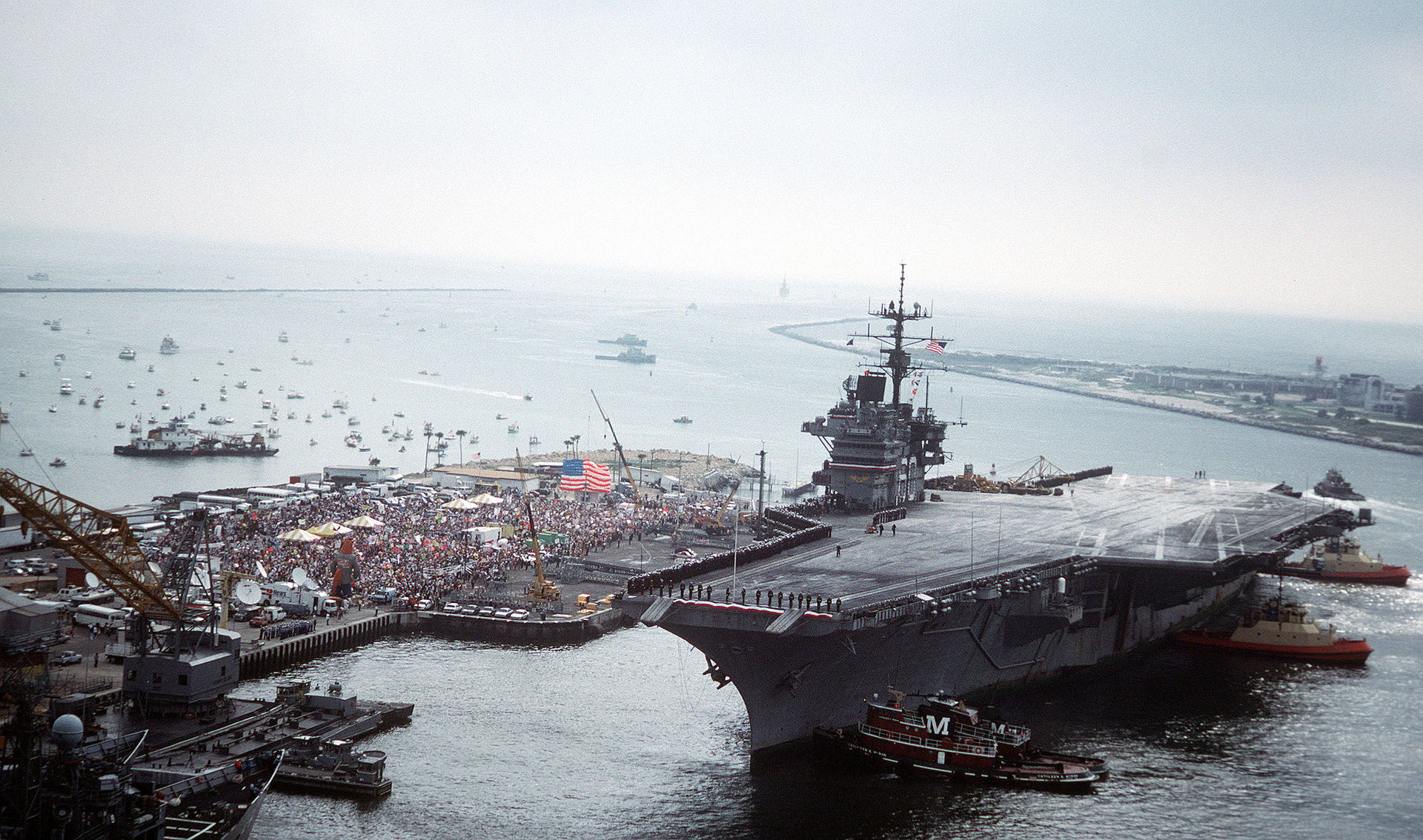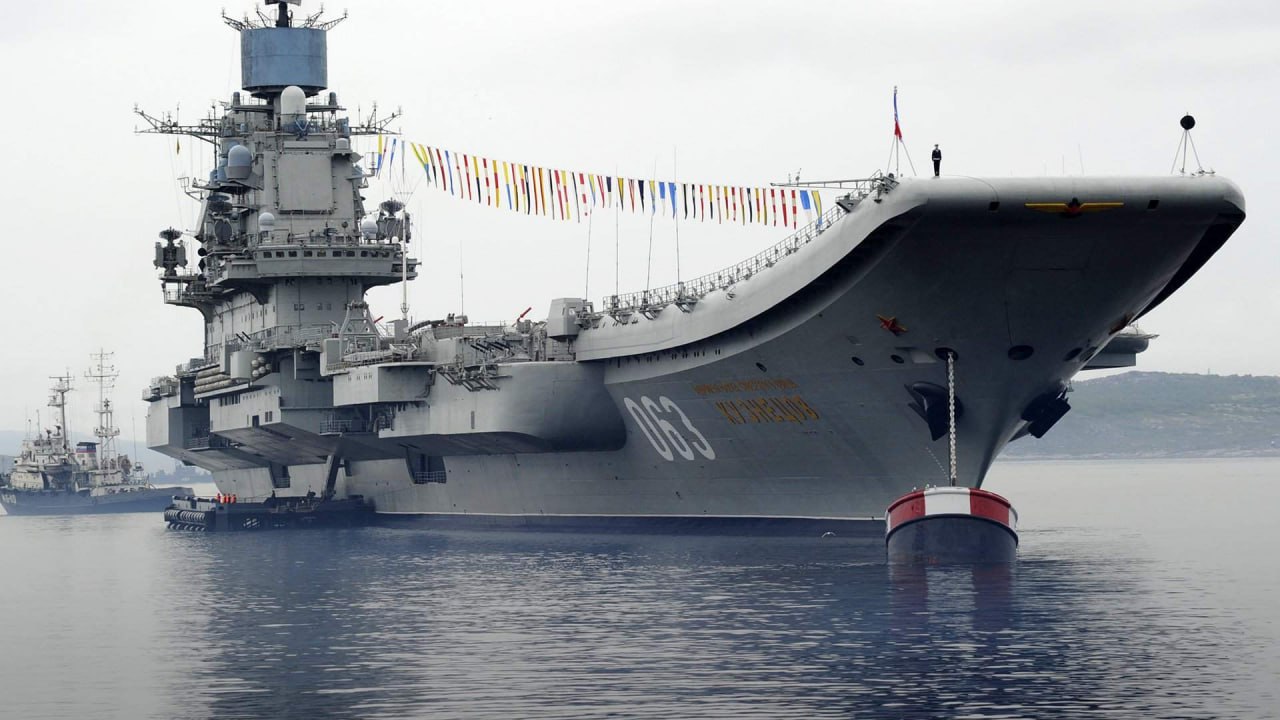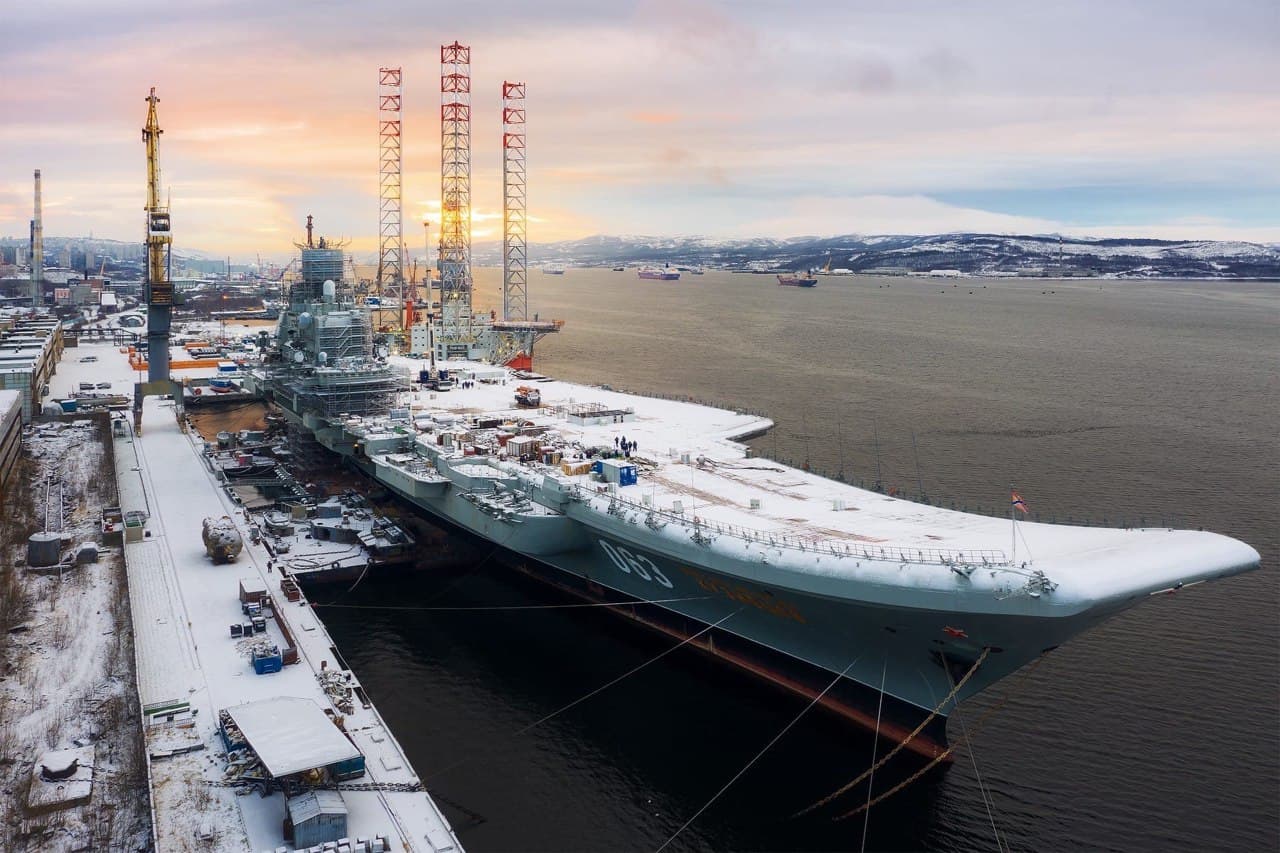List Of Russian Aircraft Carriers - The so-called "Project 71" class would be based on the Chapaev-class cruisers, displacing 13,000 tons and with a 630-foot flight deck. The carriers would each carry 15 fighters and 30 torpedo bombers, with one allocated to the Baltic Fleet and one allocated to the Pacific Fleet.
The carriers were approved in 1939 but never completed, their construction interrupted by World War II. A second project for a heavier 22,000-ton carrier was proposed but never even began construction. Stalin was succeeded by Nikita Khrushchev in 1953, but despite Khrushchev's new ideas in the age of missile warfare the best the Soviet Navy could get out of him was a single light carrier.
List Of Russian Aircraft Carriers

The carrier, Project 85, would displace just 28,000 tons and carry 40 navalized MiG-19 fighters. This project, too, was canceled even before construction began. This suggests that the carrier might have been used to support amphibious landings in Scandinavia or the Baltics had it ever been built.
While the Soviet Union was always a land power for which land warfare should take precedent over sea warfare, the wartime situation in 1943 made it crystal clear that resources could not be taken away from the Red Army to build an aircraft carrier of questionable usefulness.

Kyle Mizokami is a defense and national-security writer based in San Francisco who has appeared in the Diplomat, Foreign Policy, War is Boring and the Daily Beast. In 2009 he cofounded the defense and security blog Japan Security Watch.
You can follow him on Twitter: @KyleMizokami. In 1962, the USSR began construction of two aircraft carriers at the Nikolayev shipyards in the Ukraine. The two carriers, Moskva and Leningrad, were compromise ships, with the front half looking like a conventional guided-missile cruiser and the rear half consisting of a flight deck, a hangar and an elevator that transported aircraft between the two.
The incomplete carrier was purchased by Chinese interests, which forwarded it on to the People's Liberation Army Navy, where it was refitted and commissioned as the carrier Liaoning in 2012. Ulyanovsk was scrapped by Ukraine, which had inherited the unfinished hull after the dissolution of the

USSR in 1991. While the idea of a Soviet carrier did have its supporters, others, including the brilliant young Marshal Tukhachevsky, pointed out that as large as it was, the Soviet Union could not afford to build both an army and a navy to match its most powerful neighbors
. In the mid-1940s, with the Soviet Union locked in a mortal struggle with Nazi Germany, yet another carrier concept was proposed. "Project 72" was described as similar to the previous carrier project but, at 30,000 tons, more than twice as large.
The list of aircraft carriers by country includes all aircraft carriers organized by country of origin and service. Where appropriate, a single ship may be listed under multiple countries. For the list of seaplane carriers and tenders see List of seaplane carriers by country.

The mid-1980s were a period of major expansion for the Soviet Navy, including aircraft carriers. The USSR began construction on two carriers in the 50,000-ton class and one nuclear-powered supercarrier, Ulyanovsk, that was nearly on par with American Nimitz-class carriers.
To show you a specific Aircraft Carrier you need to choose a Country from the DropDown menu below to find its name or pennant (tactical hole) number on the list and then click the button LIVE MAP to locate the vessel on an AIS marine traffic map made
solely for that specific warship. Images of Aircraft Carrier can be seen using the button PHOTO. After the Communists' victory in 1917, science and engineering were pushed to the forefront in an attempt to modernize Russia and the other Soviet republics.

The military was no exception, and poured resources into then-advanced technologies such as tanks, airborne forces, and ground and aerial rockets. The Moskva class was followed up in the 1970s and 1980s with the Kiev class, which had a similar mission, but the United States was on the verge of fielding the even longer-range Trident missile.
This meant that the Soviet Navy would have to operate even farther from its home waters and potentially face off with US Navy aircraft carriers. Although carriers have reasonable concealment, speeds and, at higher tiers, a modicum of self-defensive secondary armament, great care should be taken to maintain a good balance in the distance from the fighting;
too far and the carrier will be unable to provide timely and constant aerial presence; too close and the carrier will be the priority target to be taken down as they are almost defenseless under the guns of enemy ships.

All aircraft carriers have access to an automated version of the Damage Control Party and Catapult Fighter consumables that activate when a fire or flood is started and when the carrier is detected by aircraft, respectively.
The Tier X aircraft carriers of the US and Japan both feature "armored" decks that are quite consistent at mitigating both AP and HE damage at long range. Yet for all of its engineering talent and manufacturing capacity, during the 74 years the USSR existed it never fielded a true real aircraft carrier.
The country had several plans to build them, however, and was working on a true carrier, the Ulyanovsk, at the end of the Cold War. Tukhachevsky had a point, and the Navy took a backseat to Red Army (and Air Force) ambitions.
This was a strategic dilemma that the Soviets had inherited from the tsars and that persisted until the fall of the Berlin Wall in 1989 — one that still affects the Russian government today. In the aftermath of the war, with the Red Army the dominant land power in Eurasia, the Soviet Navy again pushed for more carriers.
The naval staff wanted a force of 15 carriers, nine large and six small, split between the Pacific and Northern fleets, with six of the large carriers allocated to the Pacific and the rest allocated to the Northern fleet.
As a result, the Kievs had an offensive armament in the form of SS-N-12 "Sandbox" anti-ship missiles, each of which could carry a 350-kiloton nuclear warhead. Four Kievs were built, with a fifth authorized but never completed.
russian aircraft carriers in service, current us aircraft carriers in service, current russian aircraft carriers, how many aircraft carriers russia, soviet aircraft carriers, new russian aircraft carrier, aircraft carriers russia, number of aircraft carriers by country
0 Comments